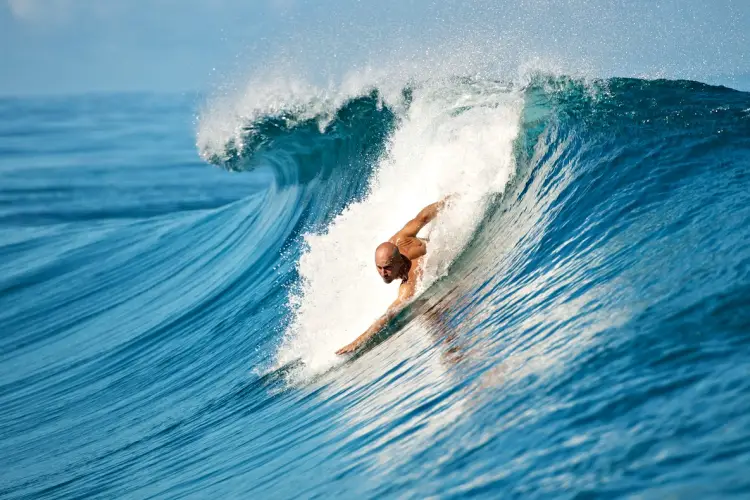How to Body Surf Like a Pro: Expert Tips and Tricks

To body surf, position yourself in the wave’s crest and ride it to shore using your body’s momentum. Keep your arms extended in front of you as you catch the wave and steer by shifting your weight.
Body surfing is a thrilling water activity that allows you to ride the waves using just your body and minimal equipment. Whether you’re a beginner or an experienced surfer, mastering the art of body surfing can provide an exhilarating experience in the ocean.
In this guide, we’ll explore the essential techniques and tips to help you improve your body surfing skills and catch epic waves. From selecting the right wave and timing your takeoff to optimizing your body positioning and leveraging the ocean’s power, we’ll cover everything you need to know to enhance your body surfing adventures. So, let’s dive in and learn how to ride the waves like a pro!

CHOOSING THE RIGHT BEACH
When it comes to body surfing, choosing the right beach is crucial for a safe and enjoyable experience. Not all beaches are suitable for body surfing, and understanding the wave conditions and safety precautions is essential. By choosing the right beach, you can maximize your body surfing experience while minimizing risks.
UNDERSTANDING WAVE CONDITIONS
Before heading to the beach, it’s important to understand the wave conditions. Look for beaches with consistent, rolling waves that are suitable for body surfing. Avoid beaches with strong rip currents or unpredictable wave breaks, as they can pose a danger to body surfers.
SAFETY PRECAUTIONS
- Check the water conditions for hazards such as rocks, reefs, or strong currents.
- Always swim and body surf in areas monitored by lifeguards.
- Be mindful of other surfers and swimmers in the water to avoid collisions.
- Wear a rash guard or wetsuit to protect your skin from abrasions and sunburn.
- Stay aware of your energy levels and don’t push yourself beyond your limits.
BODY POSITIONING AND TECHNIQUES
In body surfing, mastering proper body positioning and techniques is key to catching waves effectively. By understanding and implementing optimal body position, paddling techniques, and the art of riding a wave, you can enhance your body surfing experience significantly.
OPTIMAL BODY POSITION
- To catch a wave effectively, maintain a streamlined body position.
- Keep your body flat and aligned with the wave’s direction.
PADDLING TECHNIQUES
- Use powerful and consistent arm strokes to propel yourself forward.
- Engage your core muscles for stability and control while paddling.
CATCHING AND RIDING A WAVE
- When catching a wave, start paddling early and match the wave’s speed.
- As the wave lifts you, position your body diagonally to ride it smoothly.

COMMON MISTAKES TO AVOID
Introductory paragraph about Common Mistakes to Avoid
When body surfing, it’s essential to be aware of common mistakes that can hinder your experience in the waves. By understanding these errors and how to avoid them, you can enhance your body surfing skills and enjoy the thrill of riding the waves to the fullest.
Timing Mistakes
TIMING MISTAKES
- Avoid catching the wave too late
- Ensure you start paddling at the right moment
- Wait for the optimal timing to catch the wave
Improper Body Positioning
IMPROPER BODY POSITIONING
- Maintain a streamlined body position
- Keep your body parallel to the wave
- Avoid arching your back excessively
EQUIPMENT AND GEAR
When it comes to body surfing, having the right equipment and gear is essential for an enjoyable and safe experience in the water. In this section, we’ll discuss the different options for body surfing equipment, including bodyboards and surfboards, as well as the importance of fins and leash in enhancing your body surfing experience.
BODYBOARD VS. SURFBOARD
When choosing the right equipment for body surfing, one of the first decisions to make is whether to use a bodyboard or a surfboard. Both options have their own advantages and considerations, so it’s important to understand the differences between them to make an informed choice.
IMPORTANCE OF FINS AND LEASH
Fins play a crucial role in body surfing as they provide stability and propulsion in the water, allowing you to catch and ride waves more effectively. A leash is also essential for safety, as it keeps your bodyboard or surfboard tethered to you, preventing it from getting lost in the waves.
FREQUENTLY ASKED QUESTIONS ON (HOW TO BODY SURF)
HOW DO YOU BODY SURF?
To body surf, position yourself parallel to the approaching wave, kick your feet to propel forward, and ride the wave with your arms extended.
CAN ANYONE BODY SURF?
Absolutely! Body surfing is suitable for anyone who is comfortable swimming in the ocean or other bodies of water.
ARE THERE ANY SAFETY PRECAUTIONS FOR BODY SURFING?
Yes, it’s important to be aware of your surroundings, avoid crowded areas, and never body surf alone. Additionally, it’s recommended to use fins for better control in the water.
WHAT ARE THE BENEFITS OF BODY SURFING?
Body surfing provides a thrilling experience, improves swimming skills, enhances balance, and connects you with the power of the ocean in a unique way.
CONCLUSION
Body surfing is a thrilling and accessible ocean activity that offers an immersive connection with nature. With the proper technique, awareness of weather conditions, and respect for the ocean, anyone can enjoy the adrenaline rush of riding waves with just their body.
So, grab your swimsuit and hit the beach to experience the joy of body surfing firsthand.






